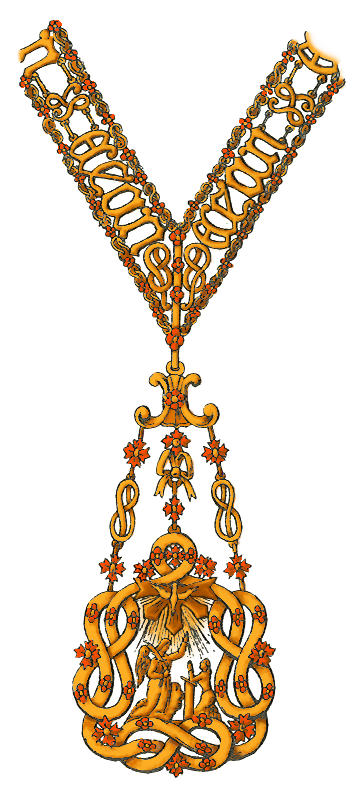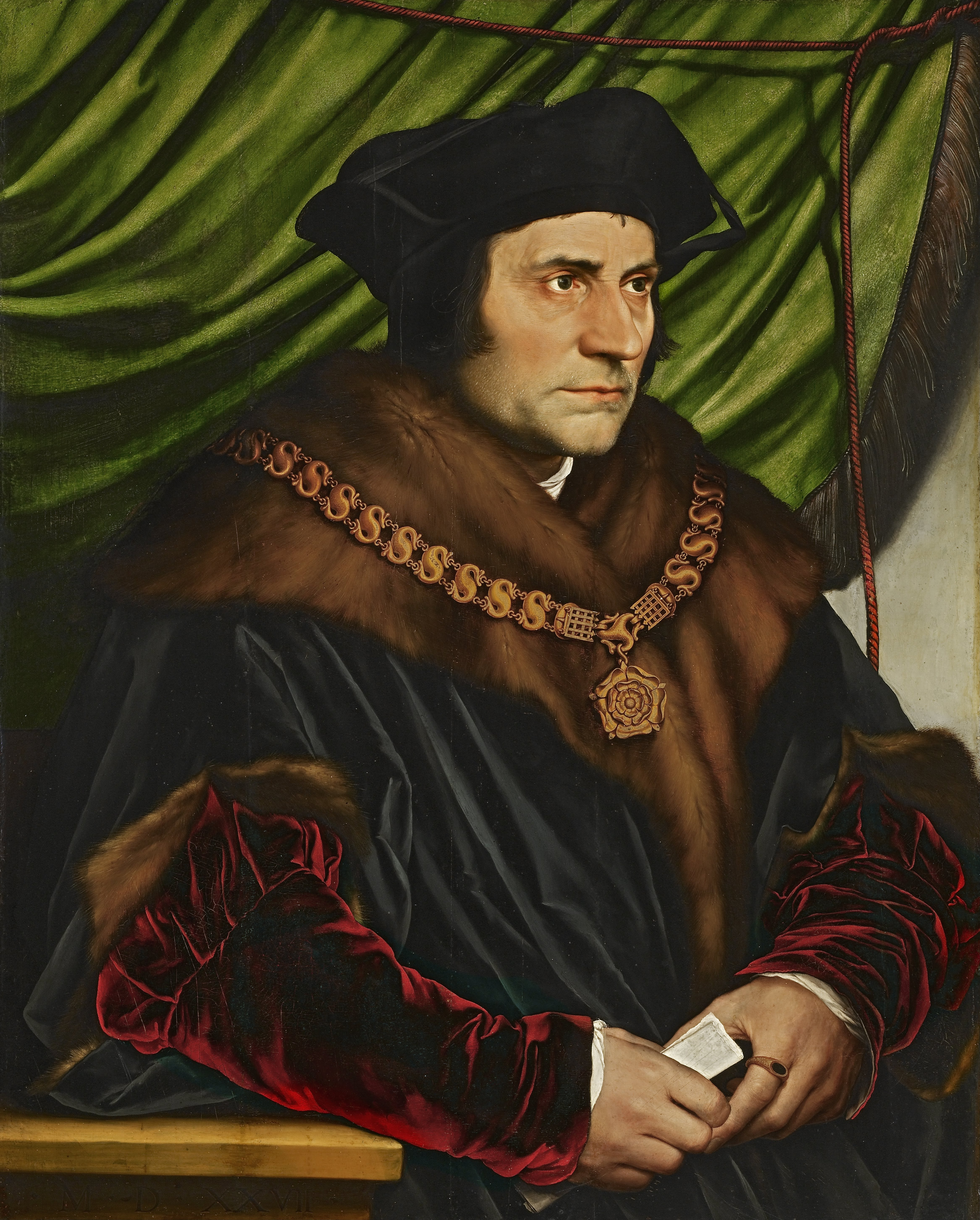|
Supreme Order Of The Most Holy Annunciation
The Supreme Order of the Most Holy Annunciation ( it, Ordine Supremo della Santissima Annunziata) is a Roman Catholic order of chivalry, originating in Savoy. It eventually was the pinnacle of the honours system in the Kingdom of Italy, which ceased to be a national order when the kingdom became a republic in 1946. Today, the order continues as a dynastic order under the jurisdiction of the Head of the House of Savoy. History and statutes The Supreme Order of the Most Holy Annunciation originated in 1362, when Amadeus VI, Count of Savoy (1343-1383) instituted the order's earliest designation, under the title of Order of the Collar.''Syr Gawayn and the Grene Knyzt-(Concluded)'', J. R. Hulbert, Modern Philology, Vol. 13, No. 12 (Apr., 1916), 140. The order was dedicated to the Blessed Virgin Mary, who is celebrated as "Our Lady of the Annunciation." The order is a dynastic religious (or Catholic) order of chivalry. Under its first formulation, the order had fifteen knights. The ... [...More Info...] [...Related Items...] OR: [Wikipedia] [Google] [Baidu] |
Collar Badge Of The Most Holy Annunciation
Collar may refer to: Human neckwear *Clerical collar (informally ''dog collar''), a distinctive collar used by the clergy of some Christian religious denominations *Collar (clothing), the part of a garment that fastens around or frames the neck * Collar (jewelry), an ornament for the neck *Collar (order), a symbol of membership in various chivalric orders *Designation of workers by collar color *Livery collar, including Collar of Esses, worn around the neck and shoulders as a mark of office *Ruff (clothing), a type of collar worn in Western Europe from the mid-sixteenth century to the mid-seventeenth century *Slave collar *Collar (BDSM), a device of any material placed around the neck of the submissive partner in BDSM Animal collars * Collar (animal), a strap around an animal's neck to which a leash or tag may be attached *Dog collar, a piece of material put around the neck of a dog *Cat collar, a piece of material put around the neck of a cat * Elizabethan collar, a protective d ... [...More Info...] [...Related Items...] OR: [Wikipedia] [Google] [Baidu] |
Dynastic Order Of Knighthood
A dynastic order, monarchical order, or house order is an order under royal patronage. Such an order is bestowed by, as a legitimate , a sovereign or the head of a once-sovereign ruling family. These are often considered part of the cultural patrimony of the ruling family. Dynastic orders were often founded or maintained to reward service to a monarch or their subsequent dynasty. A national or state order is the equivalent term for orders (e.g., of merit) conferred by sovereign states but not bestowed by ruling dynasties. In personal gift of sovereign Dynastic orders are under the exclusive control of a monarch and are bestowed without the advice of the political leadership (prime minister or cabinet). A recent report by the British Government mentioned that there is "one remaining exercise that has been identified of the Monarch's truly personal, executive prerogative: that is, the conferment of certain honours that remain within he Sovereign’sgift (the Orders of Merit, o ... [...More Info...] [...Related Items...] OR: [Wikipedia] [Google] [Baidu] |
Accolade
The accolade (also known as dubbing or adoubement) ( la, benedictio militis) was the central act in the rite of passage ceremonies conferring knighthood in the Middle Ages. From about 1852, the term ''accolade'' was used much more generally to mean "praise" or "award" or "honour". Etymology ''Accolade'' was first used in 1611 and is French, from Occitan ''acolada''. This, in turn, came from the Latin ''ad'' ("to") + ''collum'' ("neck") and in Occitan originally meant " embrace". ''Accolade'' is akin to "dubbing" or " to dub" since the tap on the shoulder with the knighting sword is accepted to be the point at which the title is awarded. History Ceremony The accolade is a ceremony to confer knighthood. It may take many forms, including the tapping of the flat side of a knighting sword on the shoulders of a candidate (who is himself sometimes referred to as an accolade during the ceremony) or an embrace about the neck. There is some disagreement among historians on the ... [...More Info...] [...Related Items...] OR: [Wikipedia] [Google] [Baidu] |
Savoy Knot
The Savoy knot, a type of decorative knot, is a heraldic knot used primarily in Italian heraldry. It is most notable for its appearance on the heraldic badge of the House of Savoy, where it is accompanied by the motto ''Stringe ma non costringe'', "It tightens, but does not constrain". The Cavendish knot is an identical heraldic knot. In shape, the Savoy knot is comparable to a figure eight. When used outside heraldry (as a real knot), it is known as a figure-eight knot. The Savoy knot can also be seen on the Alfa Romeo automobile badge (founded and manufactured in Milan, Italy) up to 1943.See the historical brands iStoria del logo (it)/ref> See also *List of knots *Order of the Most Holy Annunciation The Order of the Most Holy AnnunciationIn Italian: ''Ordine della Santissima Annunziata'' ( la, Ordo Sanctissimae Annuntiationis), also known as the Turchine or Blue Nuns, as well as the Celestine Nuns, is a Roman Catholic religious order of co ... References {{Heraldic knot ... [...More Info...] [...Related Items...] OR: [Wikipedia] [Google] [Baidu] |
Collar (jewelry)
In jewelry, a collar is an ornament for the neck. ''Collar'' is an older word for necklace, and is usually reserved today for a necklace that lies flat to the body rather than hanging freely and rests directly above the collar bone. In contemporary fine jewelry, collar necklaces are 14 inches in chain length and look similar to a collar on a shirt. In street fashion, collars are more commonly referred to as dog collars. Dog collars are associated with the punk scene and the BDSM scene. Specifically, ''collar'' may refer to: * One of the insignia of an Order of Knighthood.See:Collar (Order of Knighthood) *A wide choker popular in the Edwardian period (also called a dog collar); the style was introduced by Princess Alexandra of Denmark (later, queen consort of the UK) who wore it to hide a scar on her neck. *The various livery collars or ''chains of office'' worn by officers of state in England and the United Kingdom The United Kingdom of Great Britain and Northern Irelan ... [...More Info...] [...Related Items...] OR: [Wikipedia] [Google] [Baidu] |
Ritratto Di Emanuele Filiberto Di Savoia
A portrait is a painting, photograph, sculpture, or other artistic representation of a person, in which the face and its expressions are predominant. The intent is to display the likeness, personality, and even the mood of the person. For this reason, in photography a portrait is generally not a snapshot, but a composed image of a person in a still position. A portrait often shows a person looking directly at the painter or photographer, in order to most successfully engage the subject with the viewer. History Prehistorical portraiture Plastered human skulls were reconstructed human skulls that were made in the ancient Levant between 9000 and 6000 BC in the Pre-Pottery Neolithic B period. They represent some of the oldest forms of art in the Middle East and demonstrate that the prehistoric population took great care in burying their ancestors below their homes. The skulls denote some of the earliest sculptural examples of portraiture in the history of art. Historical portraitu ... [...More Info...] [...Related Items...] OR: [Wikipedia] [Google] [Baidu] |
Benito Mussolini
Benito Amilcare Andrea Mussolini (; 29 July 188328 April 1945) was an Italian politician and journalist who founded and led the National Fascist Party. He was Prime Minister of Italy from the March on Rome in 1922 until his deposition in 1943, and " Duce" of Italian Fascism from the establishment of the Italian Fasces of Combat in 1919 until his execution in 1945 by Italian partisans. As dictator of Italy and principal founder of fascism, Mussolini inspired and supported the international spread of fascist movements during the inter-war period. Mussolini was originally a socialist politician and a journalist at the ''Avanti!'' newspaper. In 1912, he became a member of the National Directorate of the Italian Socialist Party (PSI), but he was expelled from the PSI for advocating military intervention in World War I, in opposition to the party's stance on neutrality. In 1914, Mussolini founded a new journal, ''Il Popolo d'Italia'', and served in the Royal Italian Arm ... [...More Info...] [...Related Items...] OR: [Wikipedia] [Google] [Baidu] |
Victor Emmanuel, Prince Of Naples
, house = Savoy , spouse = , issue = Prince Emanuele Filiberto, Prince of Venice , father = Umberto II of Italy , mother = Princess Marie-José of Belgium , birth_date = , birth_place = Naples, Kingdom of Italy , death_date = , death_place = Prince Vittorio Emanuele of Savoy, Prince of Naples (''Vittorio Emanuele Alberto Carlo Teodoro Umberto Bonifacio Amedeo Damiano Bernardino Gennaro Maria di Savoia'';''Genealogisches Handbuch des Adels, Fürstliche Häuser'' XIV. "Haus Italien". C.A. Starke Verlag, 1997, pp. 33, 38–39. .Willis, Daniel, ''The Descendants of Louis XIII'', Clearfield Co., Inc., Baltimore, Maryland, 1999, p. 673. . born 12 February 1937) is the only son of Umberto II, the last King of Italy, and his wife Marie-José of Belgium. Vittorio Emanuele also uses the title Duke of Savoy and claims the headship of the House of Savoy. These claims were disputed by supporters of his third cousin, Prince Aimone, 6th Duk ... [...More Info...] [...Related Items...] OR: [Wikipedia] [Google] [Baidu] |
Emmanuel Philibert, Duke Of Savoy
Emmanuel Philibert ( it, Emanuele Filiberto; pms, Emanuel Filibert; 8 July 1528 – 30 August 1580), known as ( pms, Testa 'd fer, links=no; "Ironhead", because of his military career), was Duke of Savoy from 1553 to 1580. He is remembered for the recovery of the Savoyard state (invaded and occupied by France when he was a child) following the Battle of St. Quentin (1557), and for moving its capital to Turin. Life Born in Chambéry, Emmanuel Philibert was the only child of Charles III, Duke of Savoy, and Beatrice of Portugal to reach adulthood. His mother was sister-in-law to Charles V, Holy Roman Emperor, and the future duke served in Charles's army during the war against Francis I of France, distinguishing himself by capturing Hesdin in July 1553. A month later, he became Duke of Savoy on the death of his father, but this was a nearly empty honour, as the vast majority of his hereditary lands had been occupied and administered by the French since 1536. Instead, he cont ... [...More Info...] [...Related Items...] OR: [Wikipedia] [Google] [Baidu] |
Charles III, Duke Of Savoy
Charles III of Savoy (10 October 1486 – 17 August 1553), often called Charles the Good, was Duke of Savoy from 1504 to 1553, although most of his lands were ruled by the French between 1536 and his death. Biography He was a younger son of Philip (Filippo) the Landless, an aged younger son of the ducal family, and his second wife Claudine de Brosse of the family that unsuccessfully claimed the Duchy of Brittany. His grandparents were Duke Louis of Savoy and Anne of Cyprus. As a child, there were next to no expectations for him to succeed to any monarchy. He was christened as a namesake of the then-reigning Duke, Charles I of Savoy, the Warrior, his first cousin. However, when he was ten years old, his father unexpectedly succeeded his grandnephew Charles II of Savoy as duke and head of the Savoy dynasty, which had now also received the titles of the kingdoms of Cyprus, Jerusalem and Armenia. However, Charles's father was not the heir general of the deceased duke, only the ma ... [...More Info...] [...Related Items...] OR: [Wikipedia] [Google] [Baidu] |
Statute
A statute is a formal written enactment of a legislative authority that governs the legal entities of a city, state, or country by way of consent. Typically, statutes command or prohibit something, or declare policy. Statutes are rules made by legislative bodies; they are distinguished from case law or precedent, which is decided by courts, and regulations issued by government agencies. Publication and organization In virtually all countries, newly enacted statutes are published and distributed so that everyone can look up the statutory law. This can be done in the form of a government gazette which may include other kinds of legal notices released by the government, or in the form of a series of books whose content is limited to legislative acts. In either form, statutes are traditionally published in chronological order based on date of enactment. A universal problem encountered by lawmakers throughout human history is how to organize published statutes. Such publicat ... [...More Info...] [...Related Items...] OR: [Wikipedia] [Google] [Baidu] |
Amadeus VIII Of Savoy
Amadeus VIII (4 September 1383 – 7 January 1451), nicknamed the Peaceful, was Count of Savoy from 1391 to 1416 and Duke of Savoy from 1416 to 1440. He was the son of Amadeus VII, Count of Savoy and Bonne of Berry. He was a claimant to the papacy from 1439 to 1449 as Felix VWhen numbering of the Popes began to be used, Antipope Felix II was counted as one of the Popes of that name. The second official Pope Felix is thus known by the number III, and the third was given the number IV. It also affected the name taken by Amadeus, who would have been the fourth Pope Felix. in opposition to Popes Eugene IV and Nicholas V, and is considered the last historical antipope. Count and duke Amadeus was born in Chambéry on 4 September 1383. He became count of Savoy in 1391 after his father's death, with his mother acting as regent until 1397, during his minority reign. His early rule saw the centralization of power and the territorial expansion of the Savoyard state, and in 1416 Amadeus w ... [...More Info...] [...Related Items...] OR: [Wikipedia] [Google] [Baidu] |







.jpg)